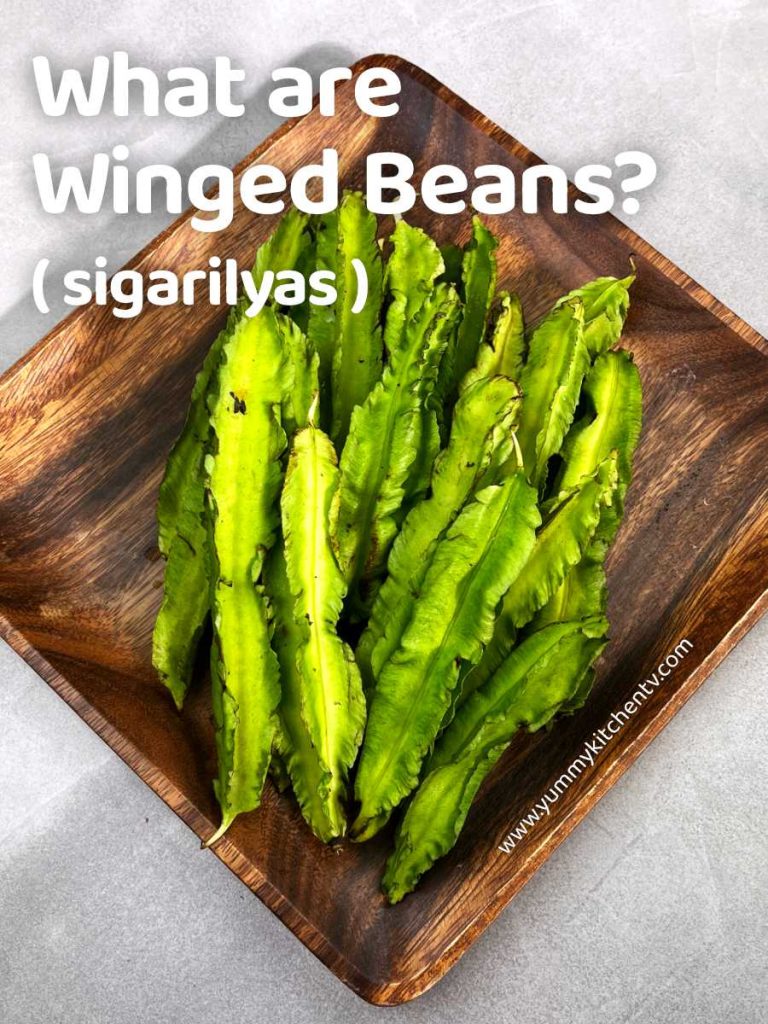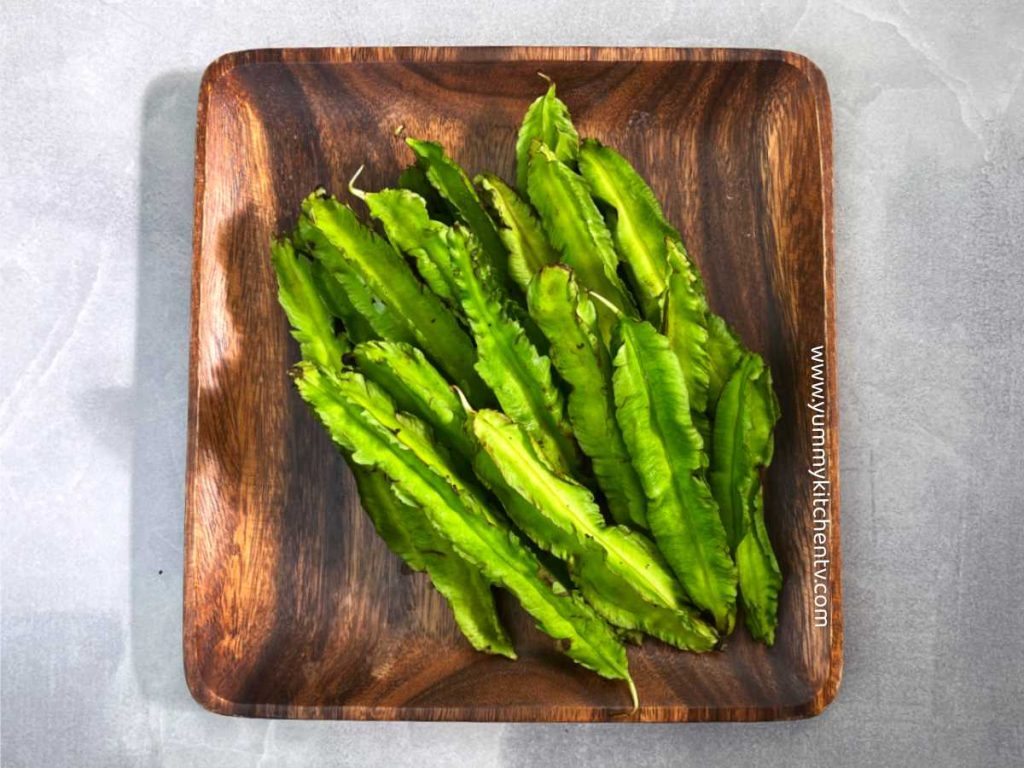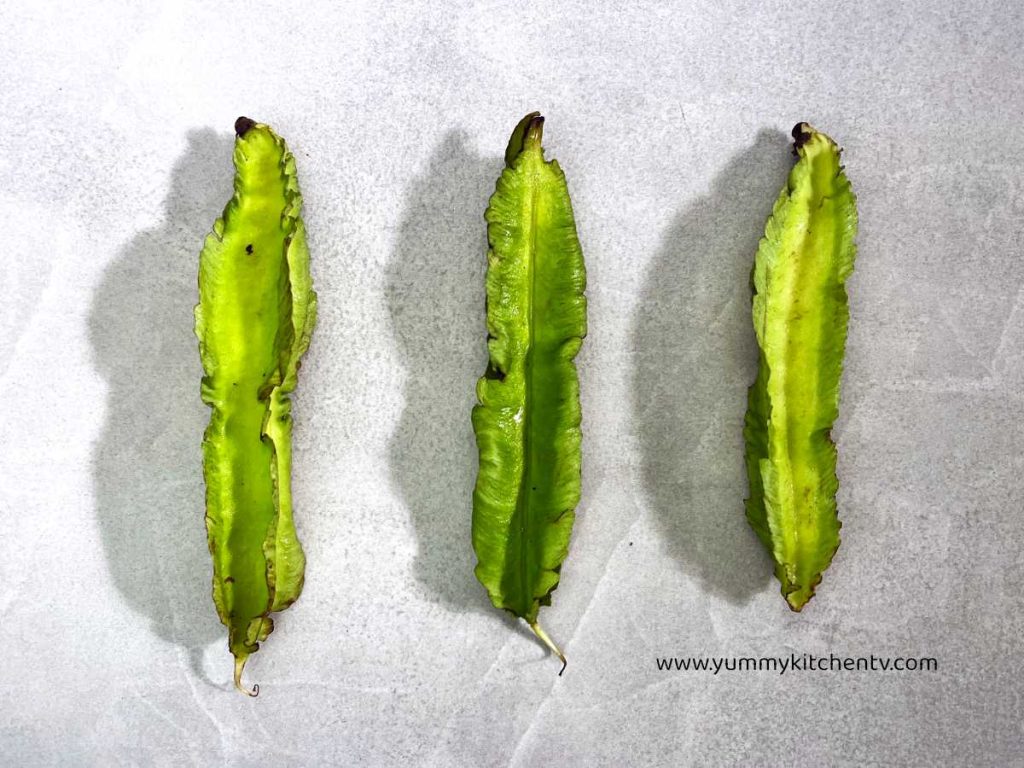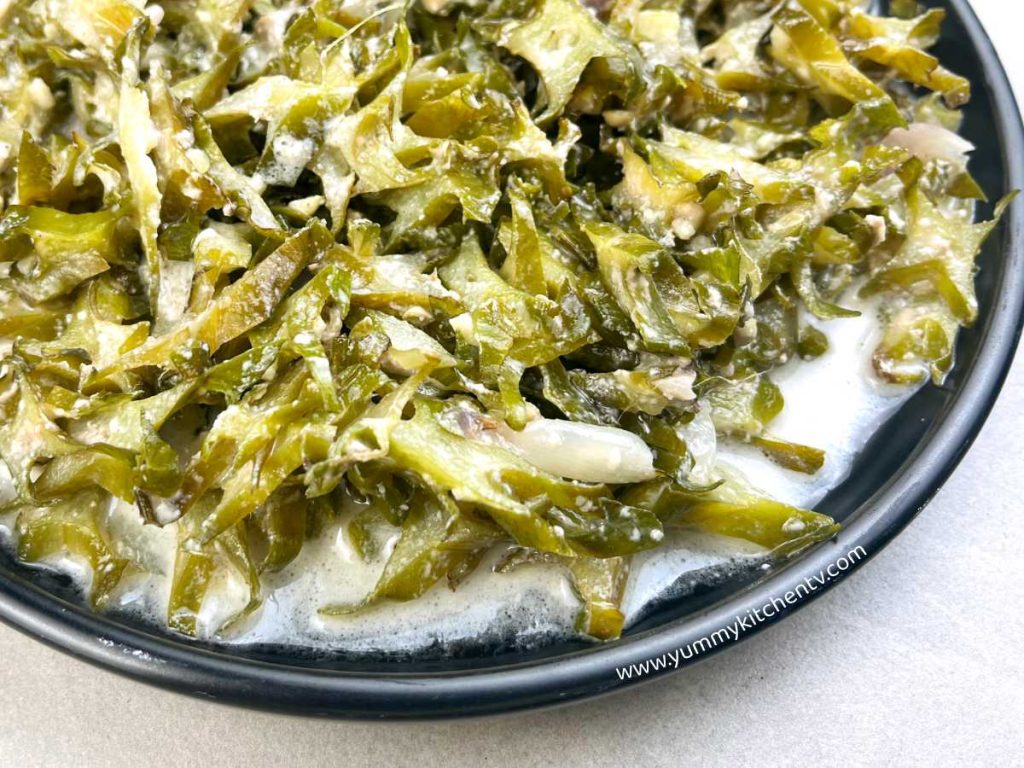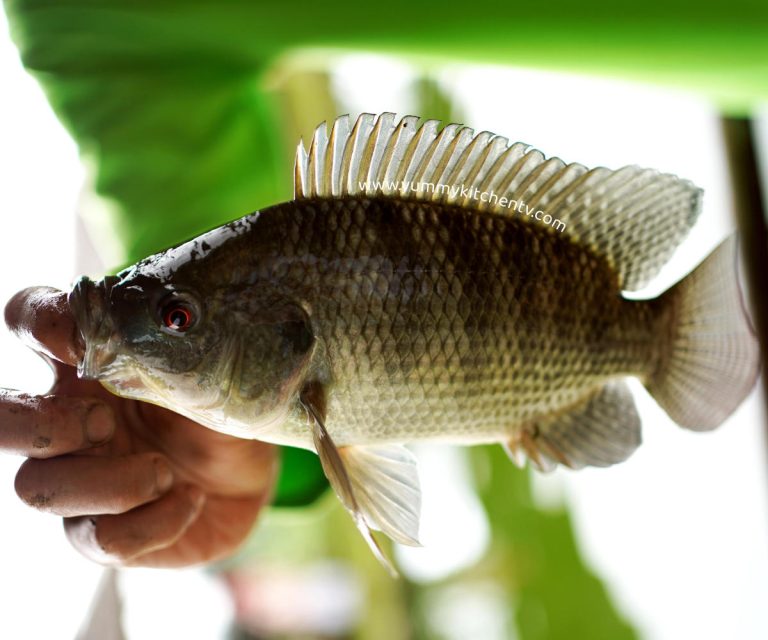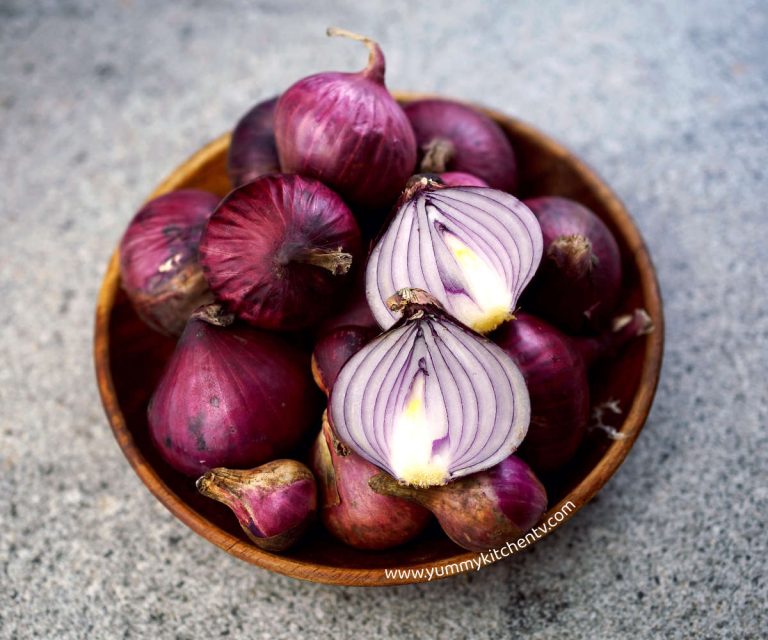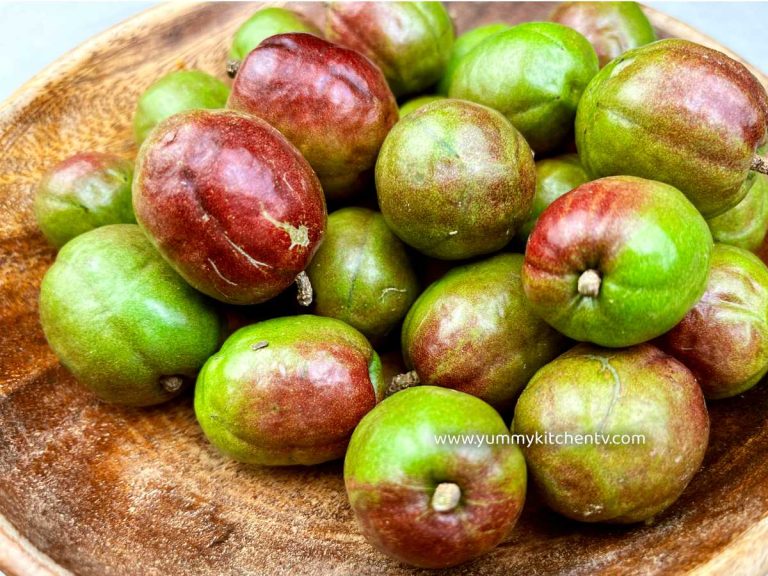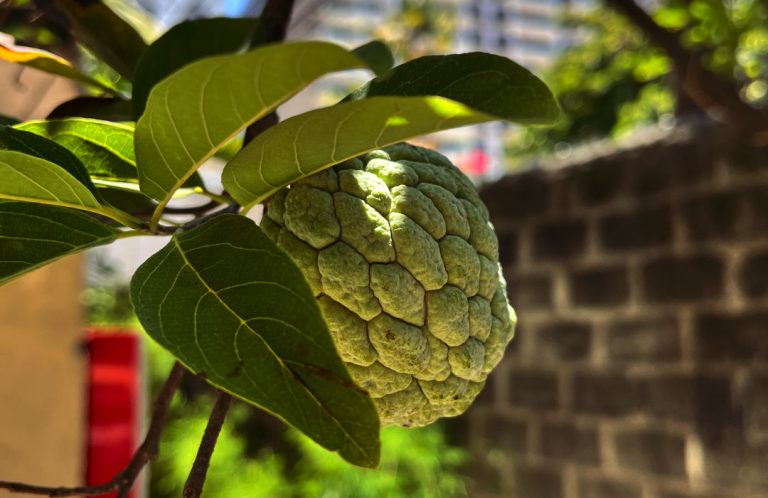Sigarilyas (winged beans)
What exactly are Sigarilyas (winged beans)? The Winged bean plant or more commonly called ‘Cigarillas’ or spelled ‘Sigarilyas’, ‘manila bean’, or ‘princess bean’ are considered legumes found in many Asian cuisines. A tropical climbing plant, with tender frilly elongated pods with pointed tips similar to an arrow, these are lime green in color, has a waxy smooth skin, and are harvested in the summer.
A short Introduction
Sigarilyas in English ‘Winged bean’ (with the scientific name Psophocarpus tetragonolobus) is a legume with many names such as ‘goa bean’, ‘princess bean’, ‘manila bean’, ‘dragon bean’, ‘cigarillas’, ‘four angled bean’, and many more coined from how it looks visually. Native to tropical areas such as New Guinea, Philippines, India, Indonesia, Thailand, Burma, and Sri Lanka. While highly known in these parts, they are only grown on a small scale, since these are sensitive to frosty and colder areas, thriving better in warmer weather with rainfalls, and humidity.
The Sigarilyas plant is happily grown by farmers as it also helps add nitrogen to soils. Interestingly, this plant is considered an annual plant in the United States or non-tropical lands, and a perennial plant in tropical countries. The Winged bean life cycle starts with the seed being germinated by soaking it for a whole day in a warm area, it swells to a certain size and has signs of sprouts, planted into the soil inches apart from each other, needing a full 8 hours of sunlight to bloom, giving it enough water to have a moist soil, pruning and adding poles to give it support, harvested after 2- 3 weeks after it’s flowered or when its 2 – 3 inches in length, any longer, they might be too fibrous and a bit hard to eat. When it matures, the winged bean seeds look like green soybeans, with some winged bean varieties producing edible large tuberous roots that are eaten raw or cooked, best for those looking for a high protein snack.
In the culinary world, these are harvested while still immature, to be able to eat the beans and the pods. They have a sweet, green pea like taste with some saying the taste and texture are close to that of a fresh asparagus, the leaves having a spinach-like texture, and the Winged bean flowers that are said to be comparable to mushrooms. Cooked and handled similarly to snap beans, boiled and or blanched, sautéed, mixed into stir-fry, or added into soups, with the seeds from matured pods can be dried then crushed to make an all purpose flour substitute.
Sigarilyas (winged beans) benefits
A frilly-looking climbing plant, untypical in most grocery stores. But if you do find it, do know that this interesting looking pod have a lot to offer. The Winged bean nutritional value is known to be high in fiber, having only 148 calories for every 100 grams, high in complex carbohydrates, Vitamin B-12, zinc, potassium, calcium, magnesium, and protein. An impressive list of benefits that are great for the following:
- Strengthens the body’s immunity, having a good amount of Vitamin A & C, this boosts your energy, and is great for fighting against foreign substances, diseases and infections.
- High in fiber, making it great for weight loss. High fiber food makes the stomach feel fuller for longer, keeping you from constantly snacking.
- Helps reduce risk of diabetes, because it is high in fiber and makes the stomach healthy, with nutrients like calcium and Vitamin D, it manages the blood sugar levels and insulin.
- Legumes help with inflammation, antioxidants possessed by this bean are good for swellings and sprains, as well as aging problems such as arthritis.
- For eye health, especially cataracts and glaucoma, it improves vision related problems as well as the nerves and muscles connected to the brain and eyes.
- Great for pregnant women, it aids in keeping the tube connected to the infant healthy, for a safe delivery. Reduces maternal anemia as well.
How to clean sigarilyas?
Place the sigarilyas in a strainer, wash it in running water and drain well. Before cooking, cut both blackened ends before slicing it 1/2 inch or as thin as 1 cm thick diagonally.
Growing Sigarilyas (winged beans) in the Philippines
Sigarilyas is a popular plant in the provinces of Pampanga and Nueva Ecija. Found in wet markets, side stalls near farms, rarely in grocery stores. But it is found in many cities, where many eat and cook the pods, leaves and the roots to give the dish a nice nutty flavor. Winged bean recipes (sigarilyas recipes) include, winged bean salads, the dish ‘gising gising’ or ‘ginataang sigarilyas’ also called ‘sigarilyas gata’ a more traditional spicy way of cooking the sigarilyas, ‘ginisang sigarilyas’ or ‘sauteed sigarilyas’ a simple and quick way to enjoy this frilly legume, some adding a mix of meats, fishes, and other spices and aromatics, depending on the preferences of each household.


